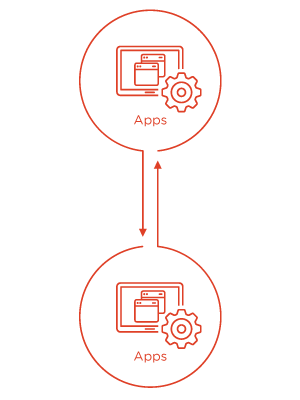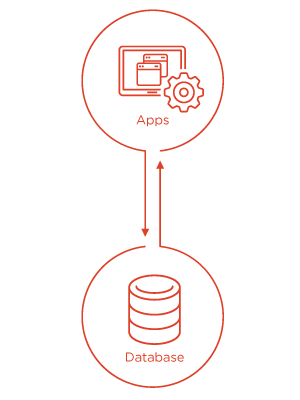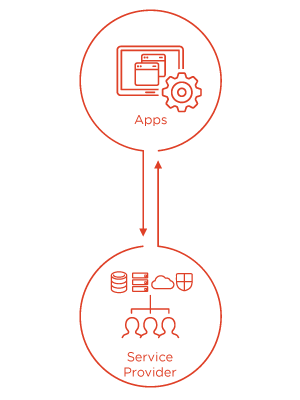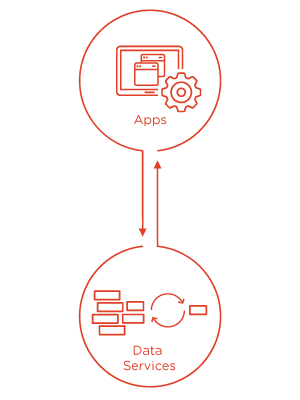
Application Synchronization
Real time synchronization ensures that business workflows can execute across applications, and that application data is properly reflected in all applications – whether they are running in production or sub-production. Enable DevOps, integrate internal teams, and populate your CMDB – all with Perspectium!
App-to-Database Replication
Extract data from business applications into databases for reporting, online catalog coordination, or for big data projects. Extract your data in bulk and/or in real-time, with complete certainty and without impacting the performance of the production systems.


Service Provider Connect
Stay connected with the external providers that deliver components of your service. Ensure that you and your suppliers retain visibility into all aspects of your process, and establish a way to securely communicate infrastructure and service offering changes as they occur.
Application Data Services
Transform your data to make it more usable to the consuming application. This is not just the mapping and reformatting of data to match fields between applications – this is the opportunity make the data more valuable through services like validation, performance/benchmarking, obfuscation, aggregation, and more.

Integration is no longer optional.
There are different ways to move data between systems
but they are NOT all the same.

The swivel chair approach is used in many companies. Someone reads data from an internal system, and re-enters it in the service provider’s tool. It may be transactional (like incident to request) or batch (import CMDB from customer) … but either way, its inefficient, error-prone, and a risk to meeting response and resolution SLAs.

Businesses with large IT organizations often turn to the do-it-yourself approach. Writing your own integrations (or having a consultant do it) might sound like a cheaper way of connecting to your suppliers, but anyone who has done it will tell you otherwise. Creating and maintaining custom integrations is both inefficient and expensive. And what happens when the person that created the integration is no longer available?

Integration toolkits came into being in the mid-2000s as an attempt to solve this problem. And while they might get you part of the way there, you still have to learn a proprietary language to create an integration, and YOU are still responsible for the data getting from point A to point B. These toolkits are often nothing more than an ETL bus, and a collection of adaptors. It’s the IKEA of integration – you still build it yourself, just from larger pieces.
... and then there’s Perspectium. Perspectium delivers integrated solutions. That means that we take responsibility for getting data from A to B. Nothing to write, assemble or maintain – we deliver a solution that is complete from end to end. All delivered as a subscription service with 24/7 support, in monitored and automated datacenters, with onboarding and customizations included
Let’s Talk About Connecting Your Business
Find out how enterprises that choose Perspectium are reducing costs,
automating processes and engaging better with their suppliers.
